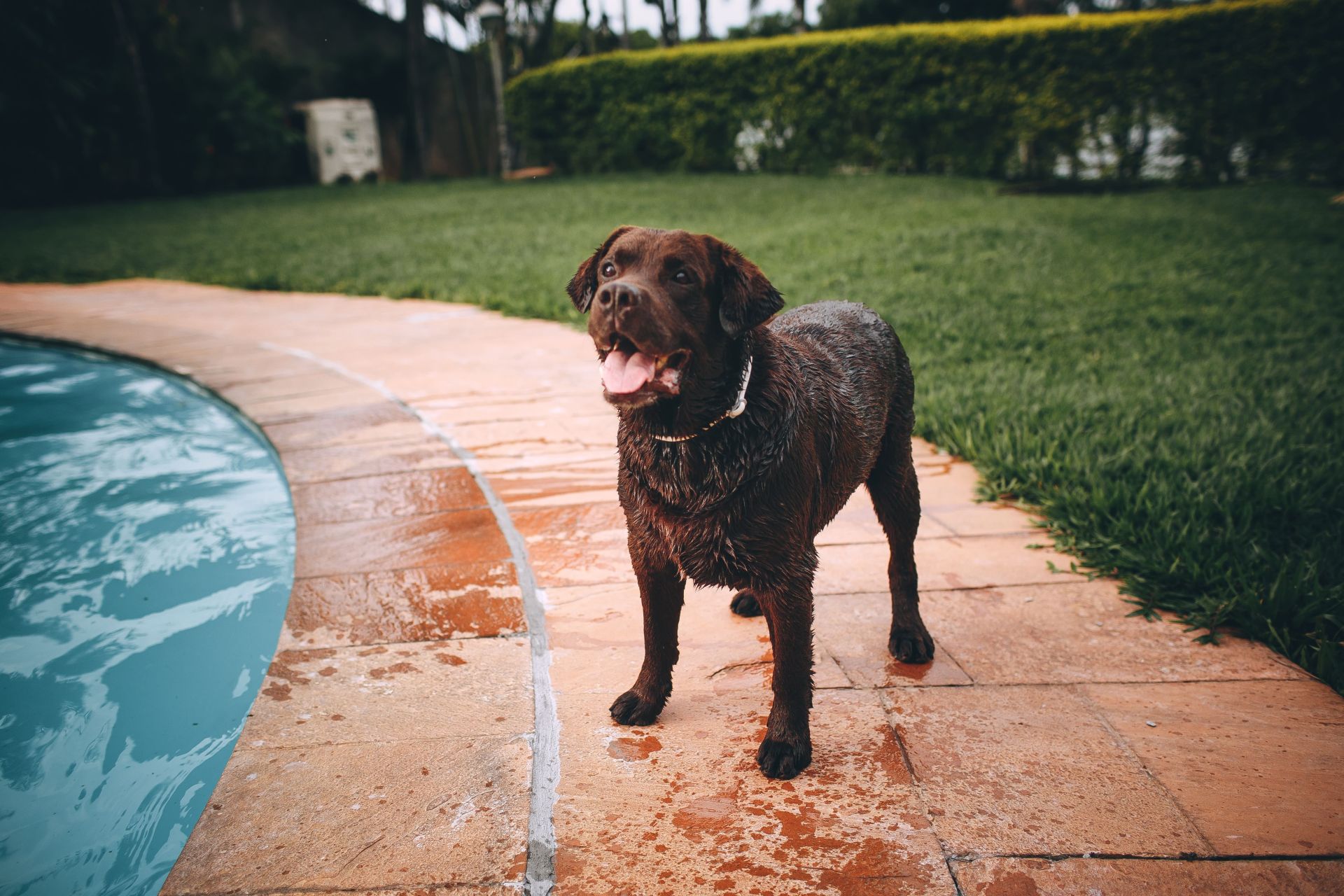Labrador Retriever
Showing 1–16 of 28 results

The Labrador Retriever could very well be called America’s Dog, as it has been the favorite breed for many decades. It’s not hard to see why – Labrador Retrievers are incredibly friendly and loving family dogs, while having the work ethic and ability to be trained as service and therapy dogs.
These energetic, outgoing dogs live to please their humans, play with friends, and go on adventures. They’re affectionate to everyone they meet, and give 100% in everything they do. They’re also very well-balanced dogs and enthusiastic athletes, doing well in a variety of canine sports. It’s hard to go wrong with a Labrador Retriever, so long as you can give them the attention and care they desire.
Temperament
A Labrador Retriever is a lot of dog, both in physical stature and in personality. While they’re not exceptionally large, they’re boisterous and animated, seemingly taking up more space than their bodies would suggest. Labrador Retrievers are outgoing and friendly, and it is rare to see a shy or withdrawn specimen. Most Labrador Retrievers are sweet, even-tempered dogs, with little to no indication of aggression. They get along well with both humans and other dogs, as well as children and the elderly. A Labrador Retriever will shower both new and old friends with affection, as they love interacting with people. Labrador Retrievers are also exceedingly loyal animals, with many stories of Labradors sticking by their humans through natural disasters or even wartime firefights. It’s part of the reason why the Labrador is employed in various roles in law enforcement and military service. The other part is that they are remarkably intelligent and capable animals. The Labrador Retriever is a jack of all trades, and can master many of them. Their boundless energy, playful nature, and gentle disposition make them well suited to almost any owner or family that is lucky enough to be able to have one.-

AKC Lab puppies
-

AKC Labrador Retriever Puppies
-

AKC Labrador Retriever Puppies
-

AKC LABRADORS PUPPIES
-

AKC Puppies
-

AKC REG. Princess Paisley
-

AKC Registered Chocolate Labs
-

Chocolate Lab Puppies
-

Chocolate Labs
-

Gorgeous Chocolate Labradors
-

Green C. Female
-

Labrador Puppies!
-

Labrador Retriever Mix
-

Litter of 8 Puppies
-

Loving Purebred Female Yellow (Dudley) Lab
-

Medium Sized Labradors AKC Champion Bloodlines
The Ultimate Guide to Labrador Retriever
Origins
The origins of the Labrador Retriever can be traced back to the island of Newfoundland, not Labrador, off of the coast of Canada. The Labrador Retriever was previously known as the St. Johns Dog, and was a descendant of the now-extinct St. Johns Water Dog. The Labrador Retriever was originally intended to be a water dog that could help fishermen and hunters retrieve fish and other game. This is why they have their famously “soft” mouth and gentle bite, as careful handling of the fish and birds was required to not spoil the meat. English sportsmen brought these dogs over to England after noticing their positive traits as hunting dogs. Breeders continued to refine the Labrador Retriever throughout the 19th century, and it was an English nobleman who first referred to the dogs as Labradors. English breeders can be credited with the survival of the Labrador Retriever, as the breed almost went extinct at the end of the 19th century. Eventually, dogs from England were subsequently imported back into the Americas in the early 20th century. The end of World War II saw the Labrador Retriever rise in popularity, and by the early 1990s it had become the most popular dog breed in the U.S. Modern Labrador Retrievers serve a variety of functions, from family pets to bomb-sniffing dogs, and they are able to excel in any role.
Key Characteristics of Labrador Retriever
| Labrador Retriever | A Labrador Retriever is a lot of dog, both in physical stature and in personality. While they’re not exceptionally large, they’re boisterous and animated, seemingly taking up more space than their bodies would suggest. Labrador Retrievers are outgoing and friendly, and it is rare to see a shy or withdrawn specimen.
Most Labrador Retrievers are sweet, even-tempered dogs, with little to no indication of aggression. They get along well with both humans and other dogs, as well as children and the elderly. A Labrador Retriever will shower both new and old friends with affection, as they love interacting with people.
Labrador Retrievers are also exceedingly loyal animals, with many stories of Labradors sticking by their humans through natural disasters or even wartime firefights. It’s part of the reason why the Labrador is employed in various roles in law enforcement and military service. The other part is that they are remarkably intelligent and capable animals.
The Labrador Retriever is a jack of all trades, and can master many of them. Their boundless energy, playful nature, and gentle disposition make them well suited to almost any owner or family that is lucky enough to be able to have one. |
| Exercise Needs | Labrador Retrievers have a “go-for-it 100%” mentality in everything that they do, and that includes exercise. Not only are they high energy dogs, they’re high-intensity athletes. They have heaps of stamina and require vigorous exercise to even begin to feel tired. Most Labrador Retrievers need at least an hour and a half of exercise per day, with many needing even more.
Because they were originally bred to be water retrievers, they love to swim and will be right at home in lakeside or oceanfront properties. They are also great runners, despite not being quite as fast as other breeds, and will easily keep up with most humans.
It’s important to give a Labrador Retriever enough exercise and play that they burn off excess energy. However, Labrador Retrievers are also workaholics and will keep going until they are completely exhausted. It is up to the owner to end exercise sessions before this happens, as becoming overtired may result in behavioral problems. |
| Labrador Retriever Grooming | The grooming requirements of the Labrador Retriever are relatively low compared to other working dog breeds. Their double coat consists of a short, wiry top coat, and a softer and lighter undercoat. This short coat means that they rarely need to have professional grooming done.
Routine maintenance of a Labrador Retriever’s coat will mostly consist of weekly brushing. They do shed throughout the year, and will shed heavier during some changes in the season when they will “blow coat”. This heavier shedding can be mitigated by more frequent brushing sessions, or by deshedding your Labrador Retriever.
Labrador Retrievers have a great deal of oil that is naturally produced by their skin, and it is these natural oils that infuse the undercoat to protect them from moisture when they swim. Their coat also sheds water very quickly. Because these oils are so important to the Labrador Retriever, it’s a good idea to not bathe them too often, lest you risk stripping the skin of these natural oils.
Most Labrador Retrievers will only need baths every month and a half to two months. An alternative to a full bath is to simply rinse your dog off with warm water – this will clean them off quickly, thanks to their quick-shedding coat, but also retain the natural oils that protect their skin.
Nail trimming should be done when their nails begin to make noise on hard floors. Tooth brushing is ideally done every day, or at least every other day. |
| Labrador Retriever Training | The Labrador Retriever’s high intelligence makes them pick up on training very quickly. Because they’re so eager to please their humans, they also tend to be excited and ready to learn during training sessions.
However, they are sensitive dogs that pay very close attention to their owner’s moods and emotions. As a result, harsh language and punishments do not work very well on Labrador Retrievers. A more productive strategy is to use positive reinforcement in the form of treats, praise, and play. This will help ensure that the Labrador Retriever learns proper behavior and does not become uncooperative or moody.
One area to watch out for during training is giving too many treats – Labrador Retrievers are prone to weight gain, and are adept at figuring out how to get the most treats possible. They’re food-oriented and very clever, so keep a close eye on how many treats your dog is getting.
Labradors also can be very mouthy and enjoy chewing on all sorts of things. Start early when training your Labrador Retriever to only chew on approved objects, such as their toys. Catching this behavior early on will make it easier to control when they are adults. |
| Labrador Retriever Lifespan And Health Issues | Labrador Retrievers have a normal lifespan for their size, having a life expectancy of 12 to 14 years. Labrador Retrievers may be prone to:
|
| Labrador Retriever Size And Space Requirements | Labrador Retrievers are large dogs that need space to run, play, and lounge around with their family. Adult male Labrador Retrievers can stand between 22 to 25 inches tall at the shoulder, while females will be between 21 to 23.5 inches. Most Labrador Retrievers will weigh between 65 and 80 pounds for males, and 55 to 70 for females.
As a high energy breed, they need outdoor spaces to explore. A home with a secure fenced yard is a good option, or access to shared spaces such as parks. Most Labrador Retrievers will not be very comfortable with apartment living, and they are more suited to medium or large-sized homes.
Labrador Retrievers are not backyard dogs, and require involvement in most family activities as well as a great deal of attention from their owners. A bored or lonely Labrador Retriever may come up with their own ways of entertaining themselves, which may involve chewing, biting, or digging. All in all, Labrador Retrievers are indoor dogs and need company throughout most of their day. |
Other considerations:
- Labrador Retrievers are not known to be escape artists, but are more than athletic enough to jump over low fences if they spot or smell a prey animal on the other side.
- Labrador Retrievers may become overly attached to their humans, which may develop into a case of separation anxiety if the dog is not trained to be alone.
- Despite their size, Labrador Retrievers are not good guard dogs because they tend to lack the protective and territorial nature required.
How can I take good care of my Labrador Retriever or Puppy?
Proper socialization
Labrador Retriever puppies are naturally outgoing and friendly, but socialization is still a crucial step in ensuring that an adult Labrador is well-behaved and gentle. Labrador Retrievers are large enough that they may inadvertently cause harm when they get too rowdy, excited, or scared. Proper socialization will help build their confidence and teach them the correct behavior. Beginning this socialization work at 8 to 12 weeks old is vital for the future mental health of your dog.
Proper nutrition
Labrador Retriever puppies grow large quite quickly, so a high-quality, premium diet is the best choice. For adult Labrador Retrievers, a slow feeder or puzzle feeder may slow down their feeding and will be helpful in preventing GDV or bloat. Weighing out your Labrador Retriever’s meals may also be a good idea, as they are prone to becoming overweight. Your veterinarian may be able to give you more specific recommendations for your Labrador Retriever puppy.
Up-to-date vaccinations
Upon bringing home your Labrador Retriever puppy, you may contact your veterinarian to inquire about their recommended vaccination schedule for your dog. Most Labrador Retriever puppies will have regular vaccinations and deworming within the first few weeks. To protect your puppy from the common transmissible diseases and bacteria, follow the schedule the veterinarian gives you to the best of your ability.
Most Asked Labrador Retriever Questions
-
+How Much do Labrador Retriever Puppies Cost